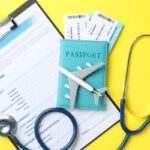Guide to Insurance Auto Claims
To help you get on the road quickly, read our step-by–step guide to your auto insurance claim. You don’t want to have to worry about your Insurance Auto Claims if you are in an accident. This guide will help you navigate your USAA auto insurance claim and get you on the road quickly.
While on the scene
Keep your eyes on the accident scene.
Contact emergency services (911) if you or someone in your accident is hurt and requires immediate attention.
Photograph the accident. As best you can, take photos of the accident.
Collect details about other drivers and cars, including the makes and models of any involved vehicles. Gather information about the driver, registration and insurance details for all other drivers. If possible, collect witness statements and names.
USAA – Reporting and settlement of your claim
The USAA Mobile App, and the online Claims Center will be your primary tools to file, receive status updates, and settle your claim.
You can send photos and messages to your adjuster anytime. You can also request rental car assistance or other benefits from your policy.
This will make the difficult event much easier by using usaa.com’s Claims Center or the mobile app.
From the beginning to the end of your claim
Your claim consists of five parts. Each part can vary depending on how complex your accident was. To help you be more in control of your claim, we’ll go into detail about each part.
Initial report
USAA will ask you for details about your accident when you first notify them. This will allow us to understand the circumstances and help you plan your next steps. Some claims are easier than others. A simple glass-only or roadside assistance claim won’t likely require you to take additional actions or report, while a collision with another vehicle will.
The initial report will contain the information that you have gathered right after the accident. An adjuster will also be assigned. Your adjuster is the person who will handle your claim. They will guide you through the remaining steps in order to repair or replace your vehicle and settle any expenses such as medical costs or property damage.
Investigation
Your adjuster will review your initial report and determine next steps.
The Claims Center will provide you with a timeline that details what USAA is doing, and what might be required from you. An adjuster will assess the accident and make a preliminary assessment. Your statements, police reports, and your information will all help determine whether you are at fault.
You are responsible for your policy’s deductible if you are at fault. This will be collected by the repair shop.
Other issues that can arise from at-fault accidents include liability for damage to property and responsibility for injuries. Your adjuster may need to consult with other parties, such as the property owners’ insurance company, legal professionals and medical service organizations.
Get an estimate for your repairs
It’s now time to have your vehicle checked and repaired if necessary. The time it takes to process your claim may be affected by where you take your vehicle. Virtual inspections are available in most states. After your claim has been filed, you will receive instructions. You may use our photo estimate tool to get an estimate. It may take as little as 4 hours.
There are many shops that can repair your vehicle. You also have the option to have it repaired at any of these shops. No matter where you are, your policy will cover reasonable repair costs. The shop repairs and payments will be covered by your policy if you choose to shop with USAA.
USAA will compile a market value report for your vehicle if it is declared total loss. The report compares your vehicle to other similar vehicles in your area and is based upon your vehicle’s pre-loss condition.
You will be paid
The repair shop will take payment from USAA or you after the work has been completed. The repair shop will usually collect a deductible from you before any work begins. You may have to pay via an electronic funds transfer, check or wire transfer if you go to an independent shop. Once you have funds, you can pay for the repair facility.
You can get your vehicle repaired and you are back on the road. Your adjuster will continue working to settle your claim with any other parties.
If your vehicle was declared totaled, we will provide you with a market valuation report, your settlement amount, and a list containing all the documents required to transfer your vehicle to USAA. We basically buy your car.
The total loss settlement can either be sent by check, or electronically deposited to your savings or checking account. Your payment to the loan provider is usually made first if you have a vehicle loan. The difference between your vehicle’s actual cash value and the amount of your loan balance would be paid to you.
Your loan balance would be offset if your vehicle’s value was less than the amount of your car loan or if you were upside down on your loan. GAP coverage is not required. You would have to pay the remaining balance of the loan.
If others are involved, you can settle the claim
At-fault accidents can make you liable for any damage to vehicles or property. Injuries are quite common in automotive accidents. Your liability coverage may cover medical expenses.
The liability coverage you have will usually include a limit to compensate the individuals involved, and another limit to cover the total liability your policy will cover. You may be subject to legal action as a result of an accident.
Liability coverage may be exhausted quickly if the other driver sustains injuries that require extensive medical and rehabilitation care in order to return to pre-accident life. You could also be financially responsible for any awards or judgments beyond your limits.
Your insurance policies should be reviewed at least annually to ensure that you are financially protected. Your liability coverage limits should cover no less than your net worth (all your assets minus any owings).
Related Articles:
https://www.usefulinsurance.us/california-occupational-accident-insurance
https://www.thanksinsurance.us/guide-to-car-insurance-claims
https://www.insuranceterms.us/guide-to-insurance-auto-claims
https://www.readinginsurance.us/insurance-companies-after-an-accident
https://www.mustinsurance.co.uk/insurance-after-an-accident
https://www.successfulinsurance.co.uk/follow-after-a-car-crash
https://www.insurancesure.co.uk/insurance-companies-used-to-mislead-people
https://www.insuranceopinion.co.uk/a-guide-to-accident-insurance




